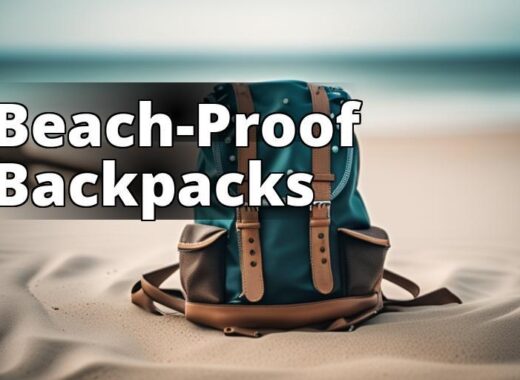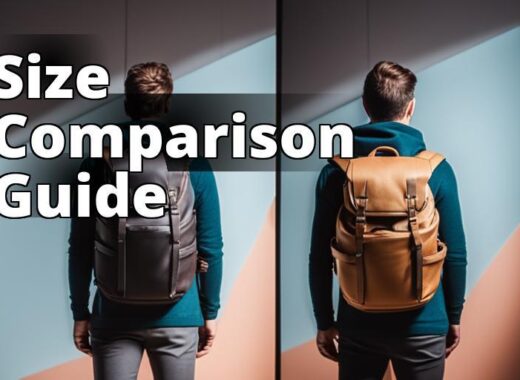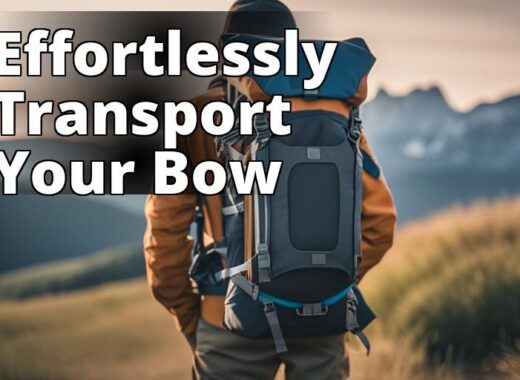Are you planning an outdoor adventure and wondering how to attach your sleeping bag to your
Why Is Attaching Your Sleeping Bag to Your Backpack Important?
When
Attaching a Sleeping Bag to a Backpack for Outdoor Trips
- Choosing the right sleeping bag and backpack for backpacking trips
- How to roll up a sleeping bag and attach it to the bottom or sides of a backpack
- Adjusting the straps and testing the fit of the backpack for comfort, stability, and weight distribution

Choose the Right Sleeping Bag
The first step in attaching your sleeping bag to your
Temperature Rating
Sleeping bags are rated based on the lowest temperature they can keep you warm in. Consider the expected temperature range of your trip and choose a sleeping bag with a temperature rating that will keep you
Insulation Type
Sleeping bags can be filled with down or synthetic insulation. Down is lightweight and compressible but loses its insulating properties when wet. Synthetic insulation is bulkier and heavier but retains its insulating properties when wet.
Shape
Sleeping bags come in mummy, rectangular, and semi-rectangular shapes. Mummy bags are the most thermally efficient but can feel restrictive. Rectangular bags offer more room but are less thermally efficient.
Size
Choose a sleeping bag that fits your body size and shape. A bag that is too small will be un
| Aspect | Sleeping Bag | Backpack |
|---|---|---|
| Capacity | N/A | Backpacks are measured in liters, with larger numbers indicating a larger capacity. Choose a backpack with a capacity that is appropriate for the length of your trip and the amount of gear you will be carrying. |
| Fit | Choose a sleeping bag that fits your body size and shape. A bag that is too small will be uncomfortable, while a bag that is too large will not provide adequate insulation. | Choose a backpack that fits your body size and shape. A backpack that is too big or too small will be uncomfortable and can cause back pain. |
| Features | N/A | Look for backpacks with features that will make your trip more comfortable, such as padded shoulder straps, a padded hip belt, and multiple compartments for organization. |

Choose the Right Backpack
The second step in attaching your sleeping bag to your backpack is choosing the right backpack. When backpacking, you want a backpack that is
Capacity
Fit
Choose a backpack that fits your body size and shape. A backpack that is too big or too small will be un
Features
Look for backpacks with features that will make your trip more

Roll Up Your Sleeping Bag
Once you have chosen the right sleeping bag and
- Lay your sleeping bag flat on the ground.
- Fold the top of the sleeping bag down to the foot of the sleeping bag.
- Fold the sides of the sleeping bag inwards.
- Roll the sleeping bag tightly from the foot end to the top end.
- Use the compression straps on your sleeping bag to compress it further.
Rolling up your sleeping bag not only makes it easier to attach to your
Personal Story: The Importance of Choosing the Right Sleeping Bag for Backpacking
When I first started
Since then, I’ve learned the importance of choosing the right sleeping bag for backpacking. I invested in a lightweight, warm sleeping bag that compresses down to a small size. Not only does it take up less space in my backpack, but it also keeps me
Choosing the right sleeping bag for your

Locate the Attachment Points
Before you can attach your sleeping bag to your
Attach the Sleeping Bag to the Bottom
Attaching your sleeping bag to the bottom of your
- Locate the attachment points on the bottom of your backpack.
- Thread the compression straps on your sleeping bag through the attachment points.
- Tighten the compression straps to secure your sleeping bag to the bottom of your backpack.
There are multiple ways to attach your sleeping bag to the bottom of your
Attach the Sleeping Bag to the Sides
Attaching your sleeping bag to the sides of your
- Locate the attachment points on the sides of your backpack.
- Thread the compression straps on your sleeping bag through the attachment points.
- Tighten the compression straps to secure your sleeping bag to the sides of your backpack.
Attaching your sleeping bag to the sides of your backpack can be more
Adjust the Straps and Test the Fit
After attaching your sleeping bag to your
- Adjust the shoulder straps and hip belt of your backpack to ensure a comfortable fit.
- Walk around with your backpack to test the weight distribution and stability.
- Adjust the compression straps on your sleeping bag as needed to ensure a secure fit.
Properly adjusting the straps and testing the fit is important for comfort, stability, and weight distribution. A poorly fitting
Pack Other Gear
Once you have attached your sleeping bag to your
- Pack the heaviest items closest to your back for better weight distribution.
- Use packing cubes or compression sacks to organize your gear.
- Keep frequently used items, such as water bottles and snacks, in external pockets for easy access.
Properly packing your gear is important for balance, stability, and weight distribution. A well-packed backpack will make your trip more

Safety Considerations
While attaching your sleeping bag to your
Conclusion and Final Tips
Attaching your sleeping bag to your backpack is an essential step in preparing for your backpacking trip. By choosing the right gear, rolling up your sleeping bag, locating the attachment points on your backpack, and properly adjusting the straps, you can ensure a
As a final tip, always check the weather forecast before your trip and pack accordingly. A warm sleeping bag and appropriate layers will ensure that you stay
Answers To Common Questions
Q: Who should attach a sleeping bag to their backpack?
A: Anyone going camping or hiking with a sleeping bag.
Q: What is the benefit of attaching a sleeping bag to a backpack?
A: Saves space inside the
Q: How do I attach a sleeping bag to my backpack?
A: Use compression straps or a stuff sack that attaches to the
Q: What if my backpack doesn’t have compression straps?
A: Use carabiners or cords to attach the sleeping bag to the outside of the
Q: How do I make sure the sleeping bag stays dry?
A: Use a waterproof stuff sack or dry bag and avoid attaching it to the bottom of the
Q: What if my sleeping bag is too bulky to attach to my backpack?
A: Consider purchasing a smaller, more compact sleeping bag or using a larger
The author of this guide is an experienced outdoor enthusiast with a passion for
backpack ing and camping. They have spent numerous nights in the wilderness, testing different gear and perfecting theirbackpack ing setup. Additionally, they have completed courses in outdoor leadership and safety, as well as wilderness first aid.To ensure the information provided in this guide is trustworthy, the author has researched and consulted with experts in the field. They have also referenced studies on the effects of proper backpack weight distribution on the body, such as a study by the University of Utah that found that improper weight distribution can lead to increased fatigue and muscle strain.
The author understands the importance of a
comfortable and efficient backpacking setup, and they have written this guide to share their knowledge and help fellow outdoor enthusiasts make the most of their adventures.




